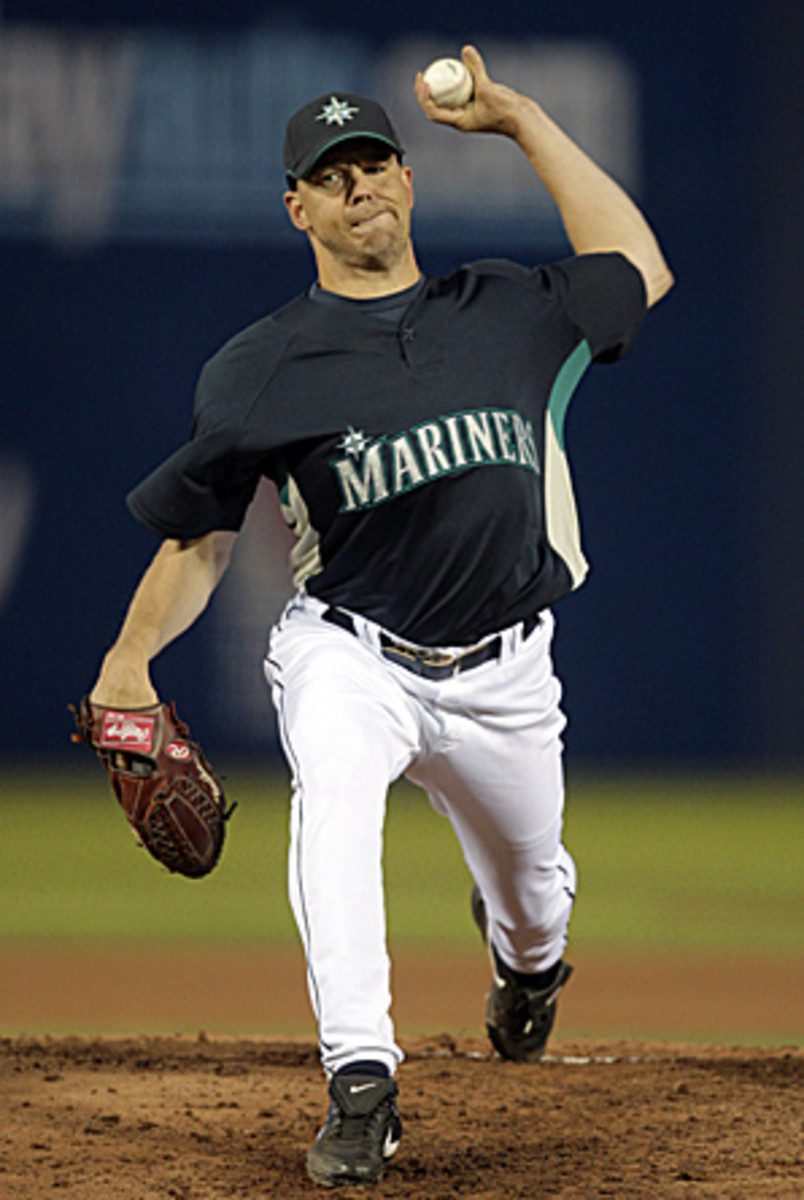Strategy of streaming
The first several weeks of the fantasy baseball season affords the opportunity for the diligent manager to take advantage of a situation that will soon dissipate. Early on, before injuries beset the Major League rosters, the free-agent and waiver pool is plush with ample batters so you can employ the hitting equivalent of streaming starting pitchers to pump up your at-bats and counting stats.
Ready. Set. Stream.
For those not familiar, "streaming pitchers" is the strategy of activating starting pitchers from a reserve list, or picking them up from the available free-agent or waiver pool when the opposing matchup is favorable, in terms of facing a weak lineup or working in a pitcher's park. The idea is to purposely not acquire better starting pitching at your draft, and, instead, focus on hitting. Then, you can select starters with favorable opponents. This is a common strategy often deployed in mixed leagues with daily moves, or in leagues with weekly moves and a reserve list. In leagues with weekly moves, pitchers with two starts are often utilized.
The concept of streaming hitters is not nearly as prevalent, so we will give you a leg up on your competition by discussing that first.
Time is of the essence
The time to enact this strategy is now, before too many hitters land on the disabled list and force their fantasy owners to find replacements, weakening the available pool from which to choose your available hitters. Once injuries really set in, and they will, the harm incurred from absorbing the batting average of the weaker substitute players will be greater than the minimal benefit you might derive from their counting stats like home runs, runs, RBI and steals.
All about substitutions
In leagues with daily substitutions, the most proactive manner to maximize your at-bats is to be ready on Monday and Thursday with players scheduled to compete that day. Especially early in the season, you might find your active lineup depleted with players having the day off as they travel to their next series. This is the time to pick up players with games and substitute them into your active lineup. Depending on the depth of your reserve list, you can add ample players into your lineup on Monday and Thursday so you are, in effect, playing with an extra player each week.
On the days in between, you can use these reserve spots for pitcher streaming, though it is usually best to, at least, look at the available hitters all week long. The reason for this is two-fold: (A) Chances are, most owners are focusing their energy on pitching, so they may miss the fact a decent hitter was dropped; and (B) The earlier you look for the Monday and Thursday replacement, the better the pool is from which to choose.
In weekly transaction leagues, you cannot achieve as much benefit from streaming hitters, but if you have a couple of roster spots occupied by fungible players, you can use these spots to activate players with seven games that week or with a series or two in a good hitter's park. Or perhaps they are slated to face Chien-Ming Wang.
Find players with multiple-player eligibility
One of the best ways to insure the greatest number of substitutions for either format is to have a few players with multiple-player eligibility on your roster. This allows some flexibility to shift players around, allowing you the chance to pick up the best available hitter, regardless of position. As such, do not discount the help a player with 1B and OF eligibility offers, for often players with middle-infield eligibility plus something else are thought to be the more valuable commodities. But since there are usually better outfielders and corner infielders available for pickup, it really helps to be able to maneuver your roster to obtain one.
Can't afford a top-notch catcher? No problem
Another ploy along these lines is to treat your catching spots as transient, not worrying about paying the premium it usually takes to snag a top-notch backstop. In shallower daily leagues, you can usually find a catcher slated to face a weak pitcher. In weekly leagues, you can often find one with at least one series scheduled in one of the more favorable hitting parks.
By approaching the catcher position in this manner, you not only free yourself of the concern of hoping your star catcher does not get hurt, but you strengthen other positions since you did not use high draft pick or a lot of your auction budget on a catcher or two. For those that did roster a good catcher, it is not too late as you can always deal your star to another team, improving a weak position and now looking to stream favorable catchers into your lineup on a daily or weekly basis.
The other advantage with doing this with catchers is often, you can better predict when your catcher will be rested, as some teams assign personal catchers to specific pitchers or always rest the catcher on a day game following a night game.
Don't focus on pitching; concentrate on at-bats
In summary, while others are focusing on managing their pitching staffs, instead concentrate on pumping up the number of at-bats your hitters accrue via aggressive usage of valuable hitters before the stock is thinned via injury. History has taught us that as the year progresses, there will be better available pitching than hitting, so you will still have time to switch focus and improve your pitching. But you will have established a head-start on your competition by beefing up your hitting counting stats and by the time your opponents realize it, the available reinforcements will not be of particularly high quality.






































